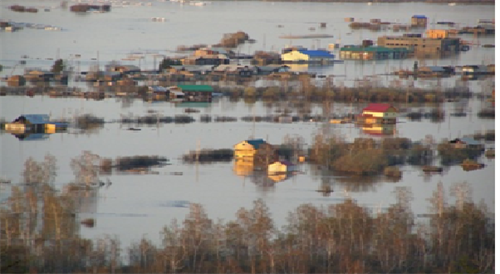Four thousand kilometers between and 18-hour time difference weren’t serious impediments for University of Alaska Fairbanks (USA) and North-Eastern Federal University (Russia) by development and implementation of this peer-to-peer initiative.
Preliminary studies have shown that floods in these regions are very similar in a number of indicators; villages Edeytsy, Sakha Republic and Galena, Alaska were severely affected by a large-scale flooding in 2013. The project’s purpose is to document lessons learned and to identify best practices of mitigating flood risk through case studies of both rural communities. Project activities also include an educational component: seminars, round tables and public lectures for students. The dialogue is unusually diverse in that it involves scientists, local, regional, and federal governments, community residents and Indigenous representatives.

To achieve the goal set by the project’s name, two visits were scheduled: the Mobile Team from Alaska visited in November 2015 Yakutsk and Arkhangelsk to learn about emergency management education and flood management in Russia. March 2016 Russian colleagues had a trip to Alaska where the Mobile Team convened a workshop on spring floods to present their results to date at the Arctic Science Summit Week in Fairbanks. During these visits methods of floods monitoring and forecasting, as well as mitigation of their consequences were introduced and discussed by project participants. Partners also plan to publish the joint results of their research as they have already collected a significant amount of information about ice jam and flood risk mitigation, community preparedness, and disaster response in the Russian Far East and Interior Alaska. On the basis of these data, recommendations for preventive measures’ optimization, as well as actions’ algorithm in case of a flood emergency will be developed. The research results are going to be published in 2016.
More information about the project can be found in the Progress report 2015 and Porgress report 2016.
